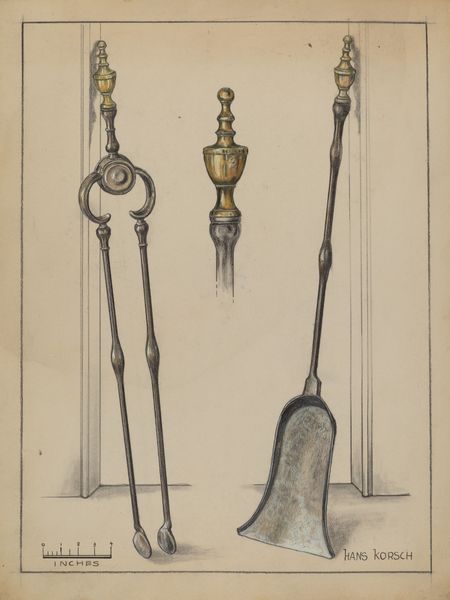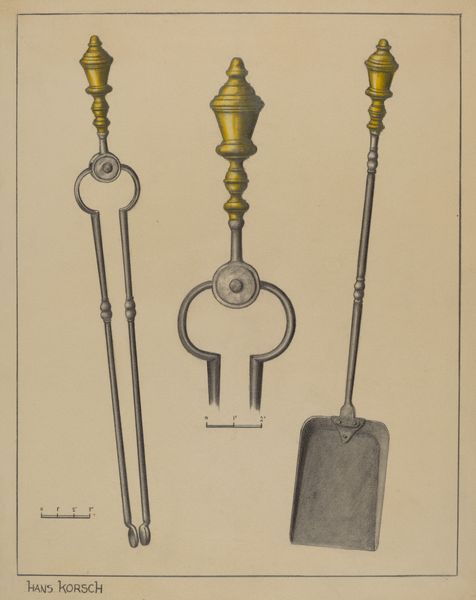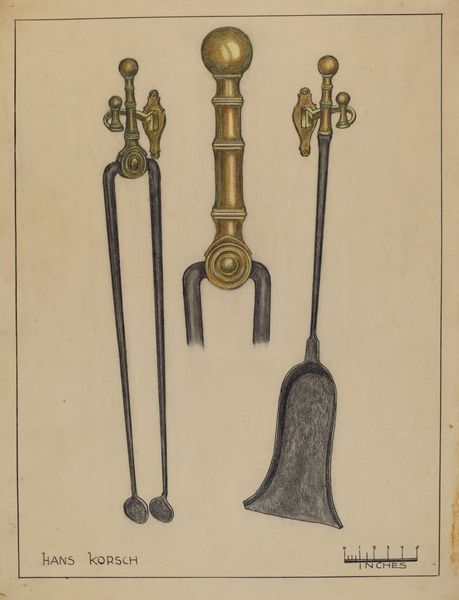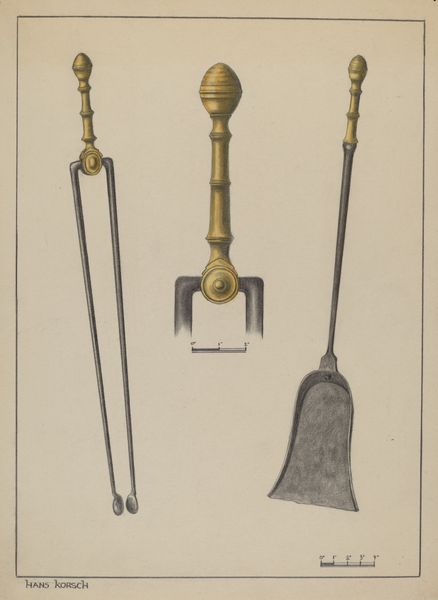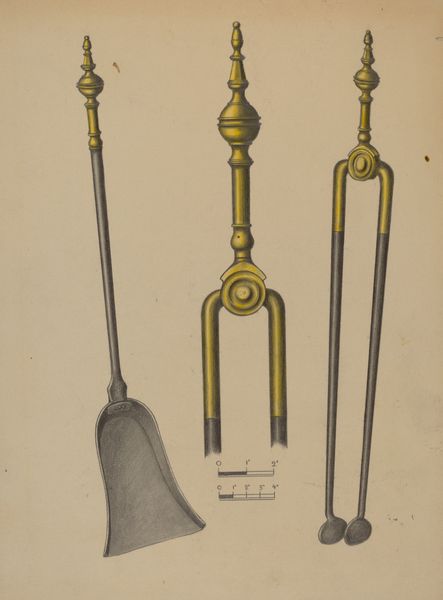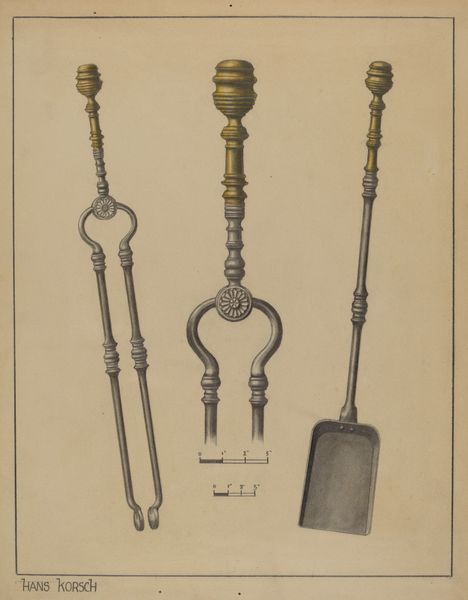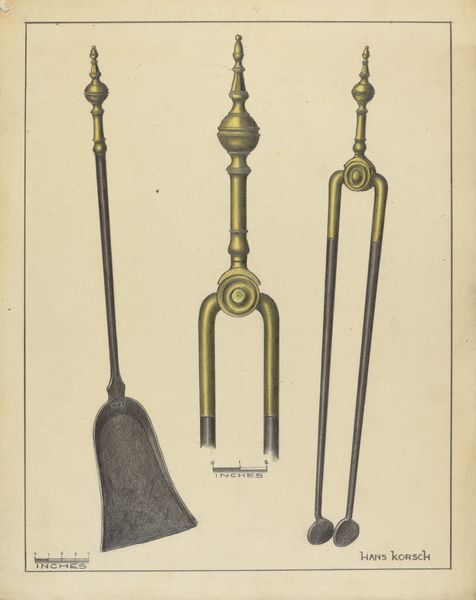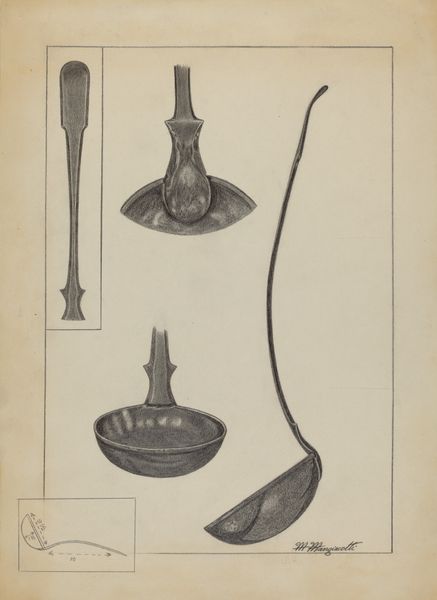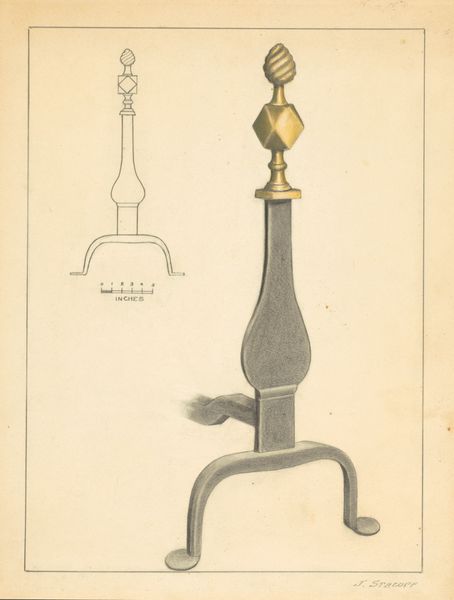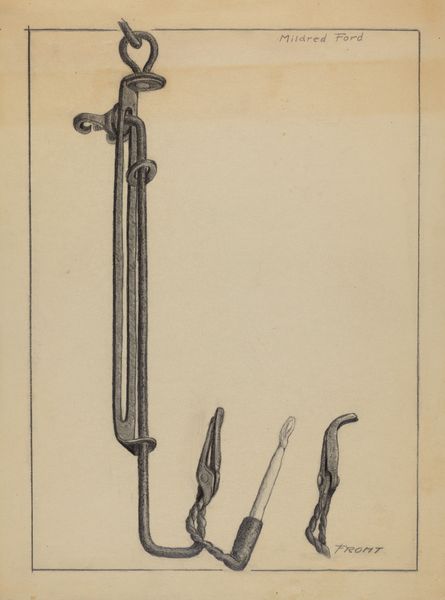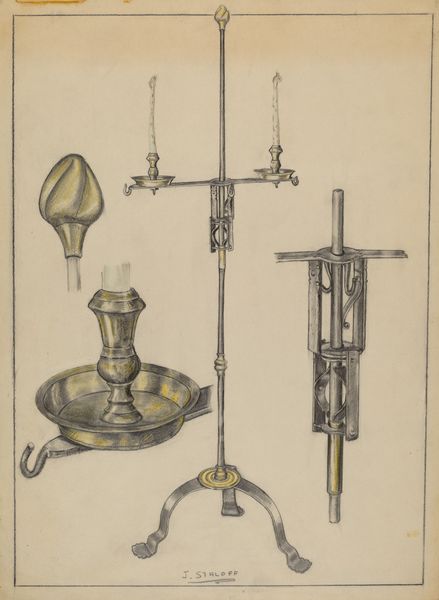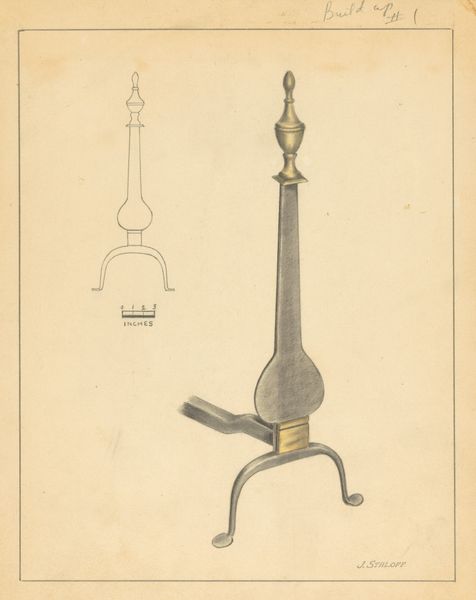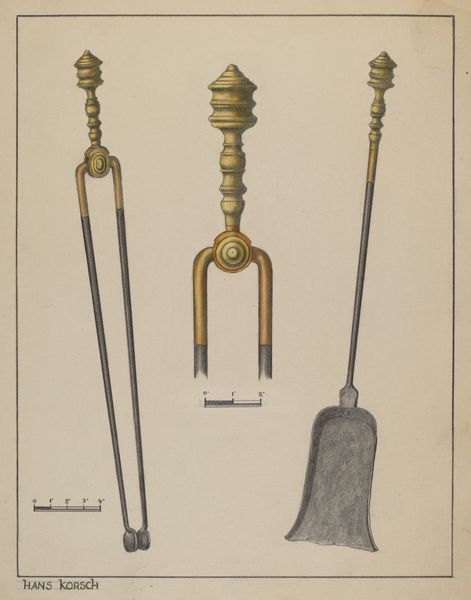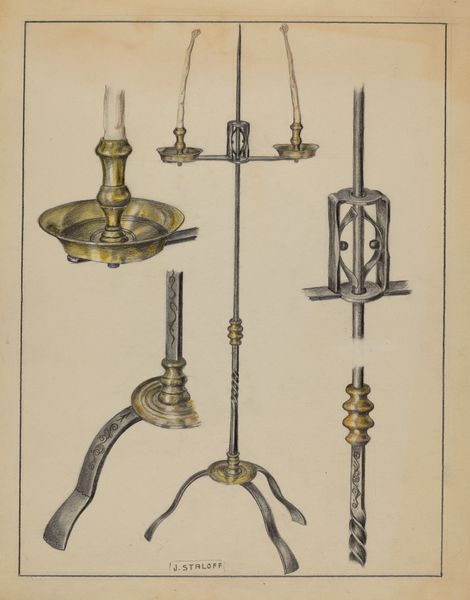
drawing, pencil
#
drawing
#
pencil
Dimensions: overall: 30.2 x 23.2 cm (11 7/8 x 9 1/8 in.) Original IAD Object: 31" logn
Copyright: National Gallery of Art: CC0 1.0
Curator: Let's discuss this drawing by Hans Korsch, entitled "Tongs and Shovel," made sometime between 1935 and 1942 using pencil. Editor: Immediately, I'm struck by the stillness. Despite depicting functional objects, the drawing evokes a sense of quiet contemplation. Curator: Indeed. The precision in rendering these everyday tools, almost like a mechanical draft, elevates them beyond their mundane purpose. Korsch has paid meticulous attention to material texture, hasn’t he? Note the shading that defines the metallic surfaces and how this contributes to the weight and solidity of the forms. Editor: Absolutely. But also observe the visual vocabulary—these implements are anthropomorphic! The rounded forms atop each could represent figures. They become symbols, not just of utility but also of hearth and home. The hearth signifies not just warmth but community and gathering. Curator: And speaking of 'home', the depiction of the tools used for tending to the fire reminds us about labor. We often forget to see those tools that stand behind comfort. It subtly speaks volumes about the lives sustained by that work. Korsch, with a few lines and gradations, emphasizes this, forcing us to consider these otherwise easily dismissed material underpinnings of a space. Editor: Precisely! These shapes resonate deep in the collective consciousness. The controlled energy, the contained fire, perhaps even controlled human emotion. I find the depiction fascinating and very symbolic. Curator: So, it is as if we are analyzing tools of domestic comfort and social control, through the same objects. Korsch truly asks us to reconsider the hidden realities. Editor: Korsch shows us, in a way, the power that symbols still hold within material, tangible forms. It becomes evident in rendering that the mundane can be the sublime when recontextualized with consideration of their meaning and fabrication. Curator: Ultimately, this study shows the transformative power inherent within the act of seeing the real world through thoughtful and artistic production.
Comments
No comments
Be the first to comment and join the conversation on the ultimate creative platform.
